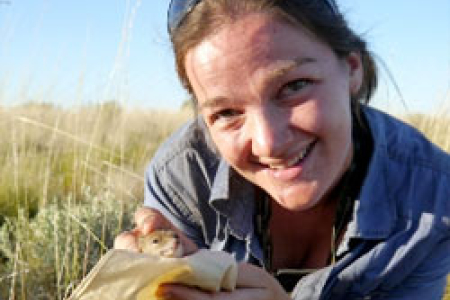Sardines on the menu for desert-dwelling mulgara
A Charles Darwin University researcher will take a tin of sardines into a remote Central Australian desert this weekend in search of a curious and cryptic carnivorous marsupial.
PhD candidate Jenny Molyneux will use the sardines as part of a strategy to recapture several brush-tailed mulgara (Dasycercus blythi) among the spinifex on Newhaven Wildlife Sanctuary in the Great Sandy Desert, 360km north-west of Alice Springs.
Mrs Molyneux, who used oats and peanut butter to capture mulgara in a field trip last year, said low capture numbers this year may indicate they had become trap shy.
“We are hoping that by increasing the reward we will be able to recapture them to see how they are going,” Mrs Molyneux said.
“I’m hoping they’ll find sardines too good to refuse.”
Mrs Molyneux is studying the effects of fire on the mulgara, one of many vulnerable native Australian arid species.
“There are discrepancies in academic literature about mulgara behaviour in and around recently burnt habitat,” she said.
“This research will give us a clearer picture.”
Mulgara had become increasingly harder to find in the past year as suitable habitat became more scattered.
“Research tells us that large-scale fires reduce vegetation cover, making the mulgara more susceptible to predators, of which there is no shortage in the Great Sandy Desert.
“If fires become more regular and more intense, as climate-change models predict, the threat to vulnerable and endangered native species seems likely to increase.”
Mrs Molyneux has placed tiny global position system transmitters on two mulgara captured in February in an attempt to gather data about their behaviour.
“It is a technique that worked successfully in determining the movement of many larger mammals but until recently had been impossible with smaller species due to the weight of the transmitters.”
She said the transmitters placed on the mulgara weighed less than 6 grams and contained the latest technology.
The research is taking place in collaboration with the Australian Wildlife Conservancy, which will use the information to refine its fire management on Newhaven.
“If we can come to a greater understanding of the changes occurring in the landscape, and refine our monitoring techniques at the same time, we will be better equipped to halt the decline of this and other species,” Mrs Molyneux said.
